Flora White
Describe your art in three words: Humanitarian, meaningful, purposeful
Your discipline: Figurative illustrative art
Website
Your background includes fashion and interior design. How did those experiences shape your artistic style and the way you compose a painting?
Even as a very small kid, I was always drawn to painting & drawing people. I was an only child living with my grand-parents and so, I guess that, doodling people made me feel less lonely at that time. This is sorta funny but my ultimate dream, even as a tiny 3-year-old toddler, was to flee to Paris and become a famous painter! Sadly, all the adults around me got me convinced that being an artist wasn’t a real job and that I had to have more practical future goals.
My favorite play things, asides my color pencils and paint brushes, were my dress-up paper dolls so, growing up, I was pretty sure that I wanted to be a fashion designer, until I’ve been there as a young adult and realized that it wasn’t it for me. Since my school also offered interior design classes and that I already had a small sideline business of mural painting and creating custom sponge design walls, I thought; why not give it a try. But this was the very beginning of the 90’s, with very basic DOS computer programs so, rooms & home designs were more in the lines of building miniature models and shopping around stores for swatches & furniture. I fast figured out that this wasn’t what I had expected neither. Non-the-less, being obsessed with fabric draping, textures & patterns for so long stuck with me in the long run so, even if it’s been over 3 decades since my studies, this is something that still transpose through in my art. I enjoy working on such details.
You mention that painting became a full-time commitment only in 2018. What inspired this decisive transition?
It was severe health issues & surgeries that had forced me to quit my job two years prior. I was a very active and adventurous person and just like that, overnight, I found myself confined to a wheelchair for a while. I was going insane just sitting there doing nothing so, I had initially started painting again as a hobby and in order to mentally survive, not knowing if it was going to be a permanent condition but then, out of nowhere, I began to collect awards, jury mentions and even a notable bursary thus, being an avid believer in destiny, I figured that life probably had this weird way of taking me back on the path that what was originally meant to be. I therefore went full throttle with it!
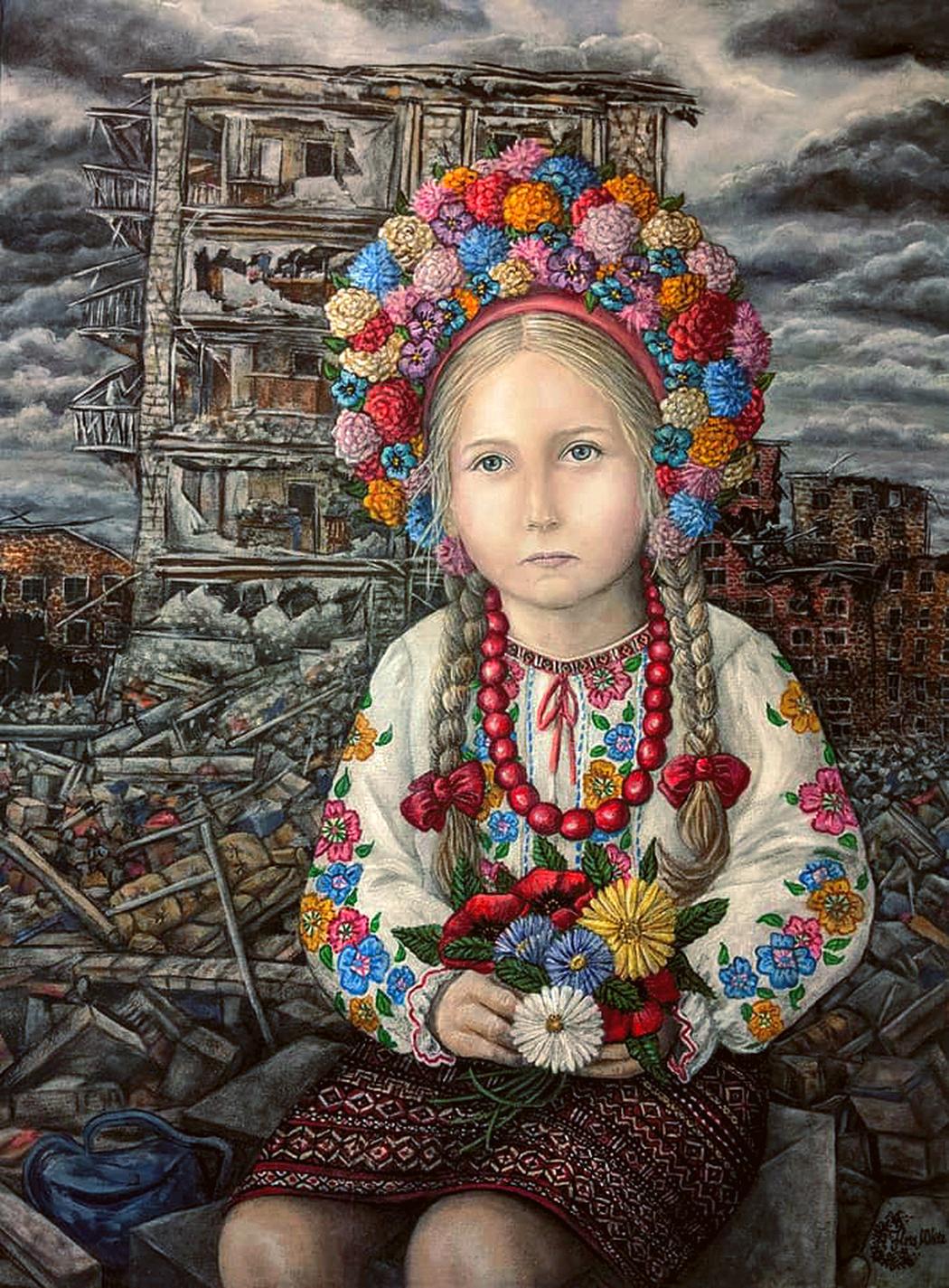 Flora White | Hope | 2022
Flora White | Hope | 2022
Many of your works combine realism with a gentle, almost naïve illustration style. Why is this balance important to you?
As I mentioned previously, when I first started painting again, I had major health problems, some of which were related to contracting Lyme’s disease. This afflicted me with severe motricity issues & spasms in my hands & fingers and so, I couldn’t control my brush at times but still didn’t want to take the easy route through abstraction so I pushed myself, persisted & persevered. My portraits were terrible at first; even the easiest landscapes were a struggle.
I had taken art classes for 5 years in the past; I was knowledgeable but I could no longer put any of it into practice. To my immense frustration, I was no longer able to draw or paint what I used to create but overtime it got a bit better and it led me to develop a very define style that I kinda stuck with overtime because my first solo exhibits (some of over 50 paintings) needed to be coherent as a whole. So I’ve adopted this style and I just kept going, doing my best to refine it overtime. Since then, it has become my signature and people now recognize the uniqueness of my work by it. I’m honest and very transparent so I’m not ashamed to admit that this is why my art is so static and lacks fluidity & dimension. It’s part of my journey and who I’ve become as an artist. I now embrace it as a gift that makes my art different from the rest; I ceased to see it as an obstacle.
You often portray children in challenging or touching situations. What draws you to these subjects, and how do you approach depicting their emotions respectfully?
My youth wasn’t very happy; in fact, some of it was pretty traumatic. I’m an emotional person and I’m very empathic so, seeing sadness, abuse, exploitation & misery in other children really gets to me on a personal level as I can relate to some extant. I’ve dedicated most of my life to different charities & community organizations throughout the years, as well as working with children in various fields. I simply can’t accept that innocent beings still fall victim, in countless ways, of men’s greed, selfishness and destruction in this day & age.
I’m no longer able to actively & physically get involved as much as I used to, so my art is my way of still making a difference by bringing awareness to the human condition, mainly children & women of all backgrounds, ethnicity & religions. My art is a statement of solidarity, a voice for human rights and welfare. It’s a cry for justice, equity & equality and most of all, it calls for peace. I cherish our diversity and value what can’t be bought; it’s what makes us human.
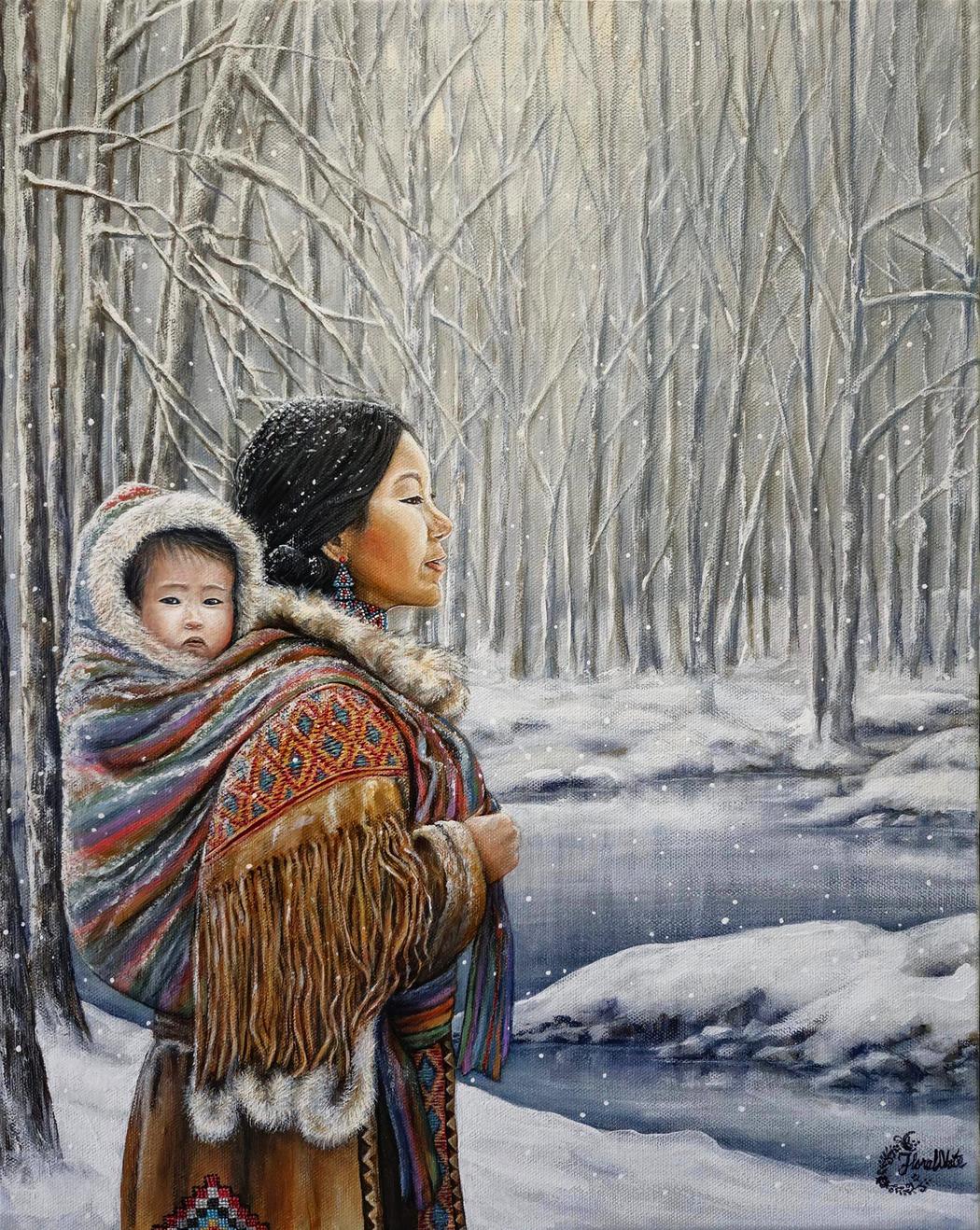 Flora White | Neb | 2024
Flora White | Neb | 2024
Why do you prefer acrylics, and how do you adapt this medium to both delicate and intense emotional scenes?
Younger, I first started painting with oils but unfortunately, members of my household were allergic to solvent (even the odor free type), so I began to use acrylics. Over the recent years I’ve developed a technique of my own and decided to stick with it. I dilute my paint into cream or liquid and work mostly by layers & small sections at a time. When I’m done, I usually dirty-up most of my paintings either with a black, grey or white veil, depending on the light & subject, in order to harmonize the whole image, cut down the contrasts & make the colors less vibrant. I sometimes use acrylic spray paint as well in my work.
I like for my art to be accessible; the messages it carries are clear, simple and easily understandable to the general public. For me, that’s what matters the most since a lot of schools & families visit my exhibits. Even as an artist, I find that there’s nothing more dull and annoying than to look at artwork that no one in the room understands, other than its creator. In my humble opinion, art should be able to speak for itself.
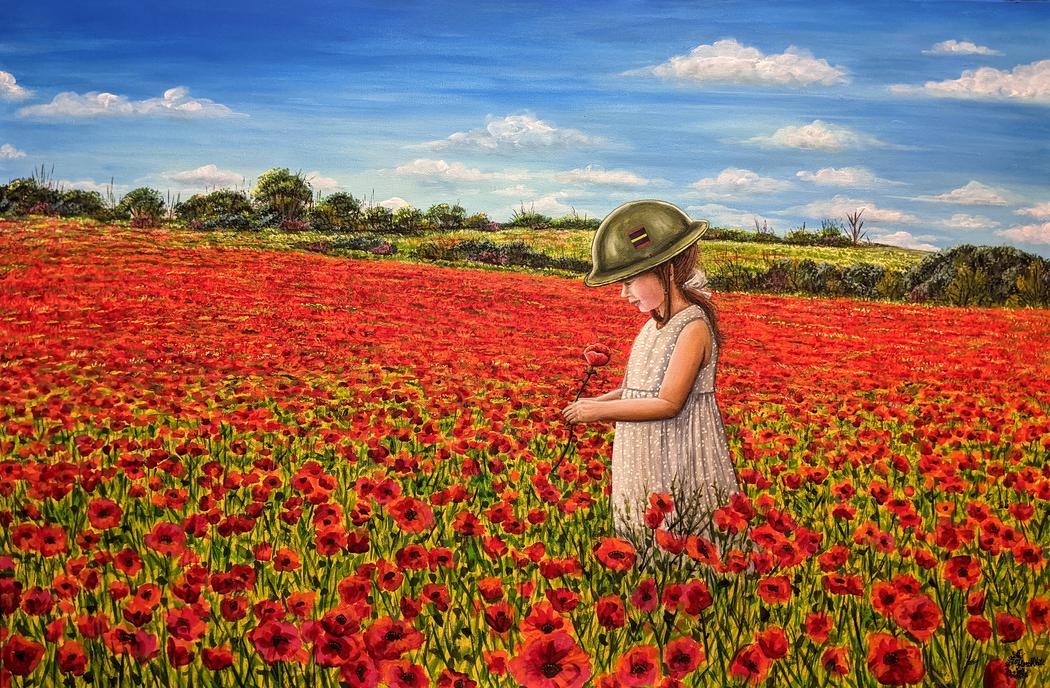 Flora White | Once Upon Our Ancestors | 2022
Flora White | Once Upon Our Ancestors | 2022
Do you usually paint from photographs, memories, or live sketches when creating such vivid and detailed works?
I seldom paint from photographs & live sketches. I often get my spark of inspiration from images & documentaries I come across, either randomly or through research. I also get inspired by my own travel experiences or life accounts & narratives I’m being recounted by migrants and homeless people that I come across. Most of my characters are improvised, they don’t represent anyone in particular but I generally have a good idea of the whole portrait & scenery I’m going to paint before I paint it. I also enjoy painting various random emotions for no other reason than I’m feeling them in that moment.
I generally start with the eyes, which for me reflect the soul and then I slowly build around them. I’m frequently told, often by children, that most of the little girls in my artworks, even African, Asian or Indian ones, look like me somehow. I guess that, unconsciously, we all paint a bit of the reflection we’ve been seeing our whole lives in the mirror. There is indeed a little bit of myself in every single one of my paintings.
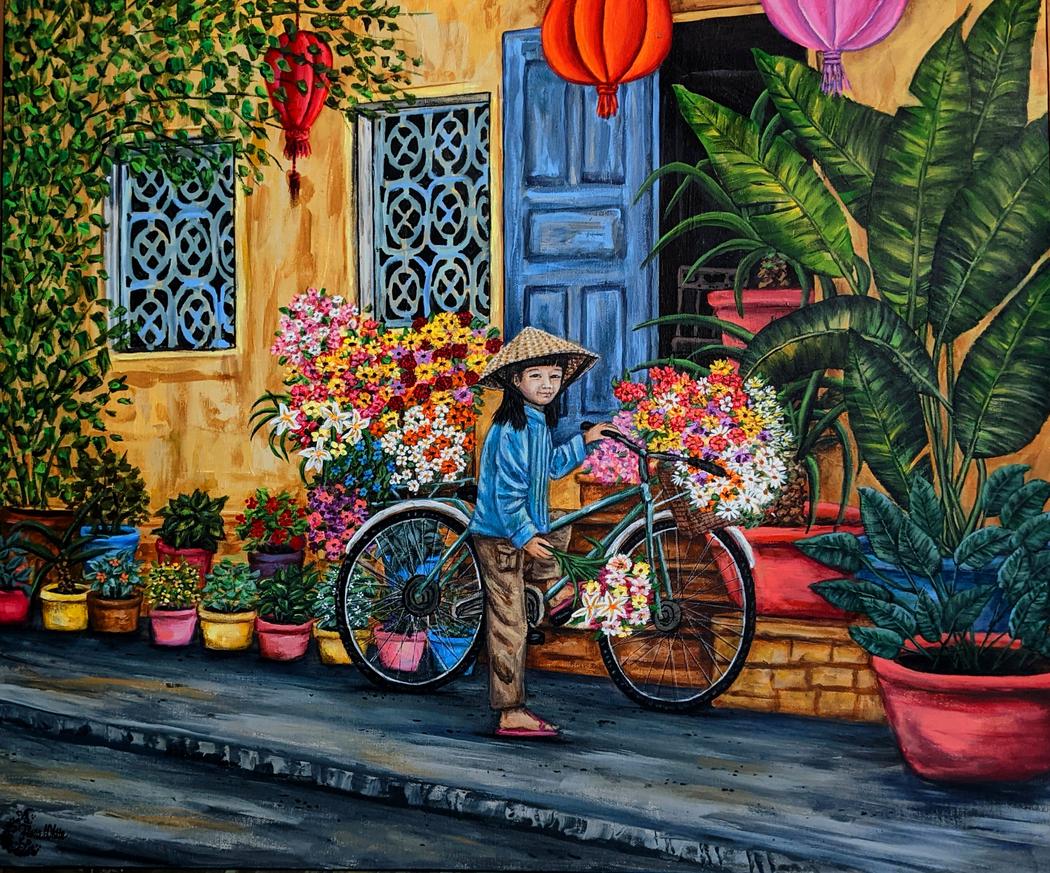 Flora White | The Little Flower Vendor | 2021
Flora White | The Little Flower Vendor | 2021
Travels and encounters strongly influence you. Which journey or meeting has most profoundly shaped your art so far?
I have a very multi-cultural entourage and family to begin with, so, this is the root of my creations. But it was mostly getting involved with a local Women’s center, mainly teaching art and providing them with support & resources for over two decades that truly deeply got me interested in other cultures and migrant women’s life journeys; How they grew-up, how things are in their home country, how they’ve made it here, what their struggles are, what they value, what they believe in, what they want for their children & their children’s children.

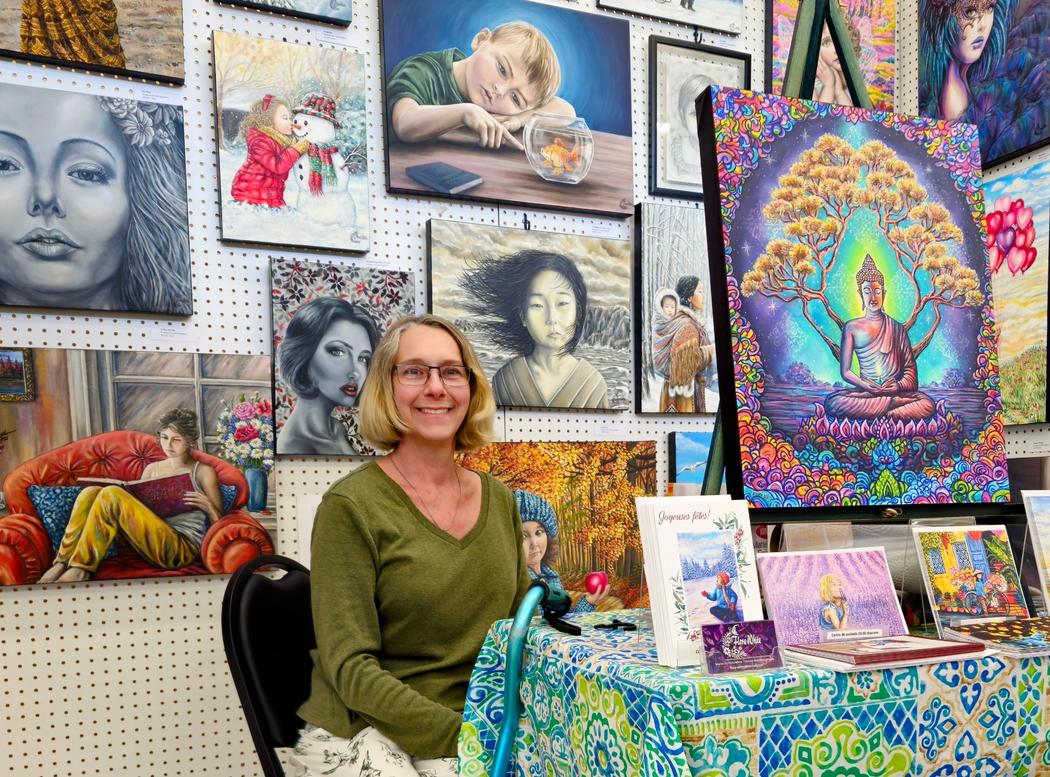
Leave a Reply